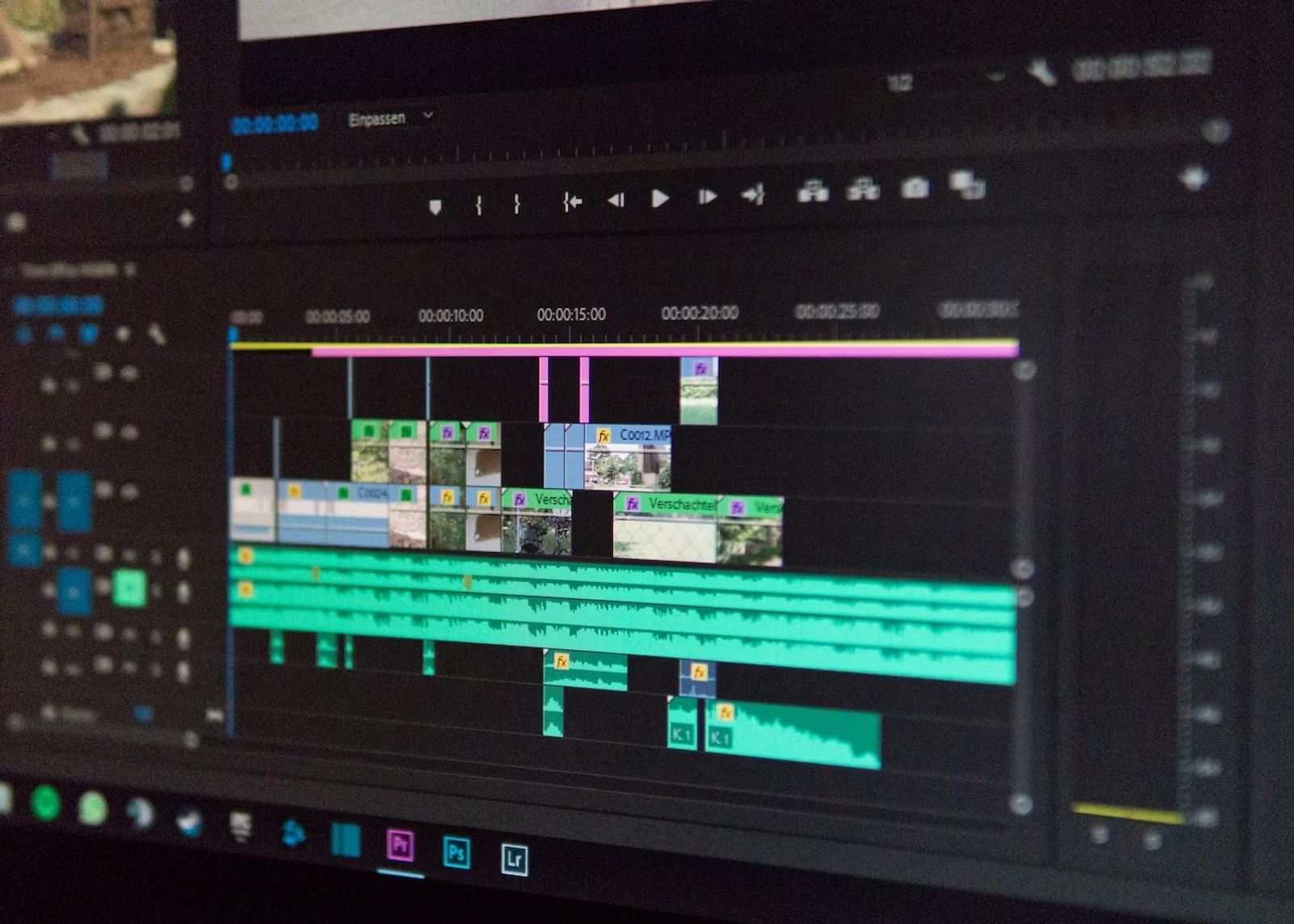
Qualitative Research Methodology and The Role of Transcription
Exploring the critical role of transcription in qualitative research, highlighting its methods, challenges, and impact on outcomes.

Exploring Qualitative Research Interviews: From In-Depth Analysis to Practical Transcription Techniques
Qualitative research interviews are a fundamental part of numerous academic and professional studies. They provide an avenue to gather rich, detailed data directly from the source, the participants. This type of research often involves open-ended questions that allow for in-depth exploration of individual perspectives, experiences, and understanding. Unlike quantitative interviews that focus on numerical data and statistical analysis, qualitative interviews delve into the nuanced complexities of individual and collective experiences.
The central purpose of qualitative research interviews is to contribute to an understanding of the social world from the viewpoint of the interviewees. These interviews capture the why and how of decision-making, not just what, where, and when. They are thus essential in fields like sociology, psychology, education, health studies, and market research, among others.
However, analyzing the data from qualitative research interviews is not a straightforward task. It involves a meticulous procedure of transcription, coding, and interpretation. Transcription is the first thing in this procedure, where the recorded interviews are converted into written text. This text is then coded to identify patterns and themes, which are subsequently interpreted to draw meaningful conclusions.

Understanding qualitative research interviews is crucial because it reveals the essence of people's thoughts, feelings, motivations, and behaviors. It helps to understand the underlying reasons, opinions, and motivations that drive people's actions, providing insights into the problem at hand. This understanding thus forms the basis of the subsequent stages of analysis and interpretation in qualitative research.
Remember, the goal of analyzing a qualitative research interview transcript is to make sense of the complex realities of the interviewees. This understanding can then be used to inform policies, practices, or theories. In the following sections, we will delve deeper into the various steps involved in analyzing a qualitative research interview transcript, with practical tips to enhance the quality and accuracy of your analysis.
The transcription of research interviews is an essential stage in qualitative research analysis. It involves converting spoken language into written text, which can then be analyzed in detail. Getting this stage right can significantly impact the quality of your research results. Here are the sub-steps in the transcription procedure of research interviews:
The first step in transcribing research interviews is to choose the right transcription method. There are three main methods to consider: verbatim, intelligent verbatim, and edited transcription.
Verbatim transcription includes every utterance from the interview, including filler words and non-verbal communication.
Intelligent verbatim transcription excludes irrelevant interruptions and filler words for a cleaner read. Edited transcription involves paraphrasing the responses for brevity and clarity. The choice between these methods depends on the nature of your research and the level of detail required.
Once the transcription method is chosen, you can begin the procedure of transcribing. It is often helpful to listen to the interview recording multiple times to ensure accuracy. The transcription should accurately reflect the responses of the interviewee and the overall context of the conversation.
A helpful tool to use during the transcription procedure is transcription software. Tools like Happy Scribe can help automate the procedure and save some period. Some software even can identify different speakers, which can be particularly useful in group interviews.
After the initial transcription is complete, it's a period to review and edit the text. This step involves checking the text against the audio recording to ensure accuracy and completeness.
This is also when you can add additional contextual information, like noting the tone of voice or emotional responses that may not be clear in the written text.
Lastly, it's essential to anonymize the data, if necessary. This involves replacing names and other identifying information with pseudonyms or codes to protect the privacy of the participants. This is especially crucial in research that involves sensitive topics or vulnerable populations.
In summary, transcribing research interviews is a meticulous procedure that demands attention to detail. However, with careful planning and the right tools, it can be a manageable and rewarding part of the qualitative research procedure.

One of the most essential techniques for analyzing qualitative research interview transcripts is Coding. This refers to the procedure of categorizing and tagging individual pieces of data (in this case, segments of interview transcripts) with labels that signify specific themes or ideas.
Coding can be deductive (from theory) or inductive (from data). Deductive coding starts with a predetermined codebook, while inductive coding allows the codes to emerge from the data. It's best to start with open coding (inductive), where you identify novel themes, and then proceed to axial coding, where you link themes.
Another powerful technique is Thematic Analysis. This procedure involves identifying, examining, and recording patterns (or 'themes') within the data. These themes are essential to describing a phenomenon and are associated with specific research questions.
Themes emerge through the procedure of coding, categorizing, and analytic reflection. It is important to note that themes are not just content. They represent something important about the data about the research question and some level of patterned response or meaning within the data set.
Content Analysis is another method that involves quantifying and analyzing the presence, meanings, and relationships of certain words, themes, or concepts within the data.
This method uses a set of categories derived directly from the text data. With a robust coding scheme, content analysis can provide a systematic and objective means to quantify and analyze phenomena.
Narrative analysis
Narrative Analysis is another technique for analyzing interview transcripts. This is particularly relevant when the data involves personal stories or experiences.
In this approach, the researcher attempts to understand and interpret how participants create and share their stories to make sense of their world. Researchers who use this approach may also consider factors like plot, setting, characters, and sequence within the interview responses.
Discourse analysis
Lastly, Discourse Analysis is a method that focuses on the ways language, both spoken and written, enacts social and cultural perspectives and identities.
It is usually concerned with the analysis of language in use. This could be the language used in interview transcripts, how language changes over a period, or the language used in a particular context.
Regardless of the technique you choose for analyzing qualitative research interview transcripts, it's important to approach the data with a clear understanding of your research goals and questions. This will allow you to align your analysis technique with your overall research strategy.
Importance of thematic analysis in qualitative research
Thematic analysis is an essential tool in analyzing a qualitative research interview transcript. It is a method for identifying, interpreting, and reporting patterns (themes) within data.
The method allows the researcher to organize and explain their data set in rich detail. More so, it provides a potentially flexible and useful research tool that can give a complex, detailed, and nuanced account of data.
In qualitative research, delving deeper into the participant's experiences and perceptions is crucial. This is where thematic analysis comes in. It helps to illuminate the various themes and patterns that emerge from the data collected.
It makes it possible to give a voice to the participants, thereby capturing their experiences, views, beliefs, concerns, and attitudes towards the subject matter of the study.
Moreover, thematic analysis involves data familiarisation, data coding, theme searching, reviewing themes, defining and naming themes, and producing the final report.
This systematic approach ensures that the data analysis is comprehensive. It allows the researcher to interpret their data in a way that answers the research question(s) effectively.
Additionally, the thematic analysis procedure is highly flexible and can be adapted to meet the specific needs of a study. It can be used with any theoretical framework, making it a versatile tool for qualitative research.
Furthermore, it can provide valuable insights into the socio-cultural contexts and environments in which individuals operate, thus providing a broader understanding of the research topic.
Lastly, thematic analysis promotes transparency in qualitative research by involving a clear, step-by-step procedure. The researcher can clearly and concisely explain how themes were identified, thus allowing others to understand and replicate the procedure. This transparency enhances the validity and reliability of the research findings, thereby adding value to the overall study.
Practical tips for handling large volume transcriptions
Dealing with a large-volume transcript can be daunting without a structured and systematic approach. Here are a few practical tips that can assist you in managing and making sense of the abundant data.
Familiarize yourself with the data.
Begin by reading through the transcript to get a general sense of the content. This will give you a broad understanding of your data and help you identify patterns, themes, and connections that might take a period to become apparent.
Organize the transcriptions
After familiarizing yourself with the data, the next step is organizing the transcript. Digital tools like NVivo or Atlas can be extremely helpful in managing large amounts of data. These tools allow you to code and categorize your data, making identifying and analyzing patterns and themes easier.
Disintegrate the data
Another key strategy is to break down the data into smaller, manageable parts. Instead of analyzing everything at once, divide the data into sections or topics. This way, you can focus on one part of the data at a period, making the analysis procedure less overwhelming.
Cross-reference
Cross-referencing is also a valuable technique when handling a large-volume transcript. As you analyze each transcription, cross-reference it with your earlier findings. This not only helps in validating your results but also in identifying new patterns and themes.
Remember the iterative process of qualitative research
Lastly, remember that qualitative research is an iterative procedure. As such, you may need to return to the transcriptions multiple times during the analysis procedure. Don't be discouraged by this. Each review brings you closer to a more nuanced understanding of the data.
Managing large-volume transcriptions may require a period and patience, but the insights and understanding you gain will be well worth the effort. These practical tips should help you navigate the process more efficiently and effectively.
Common challenges in analyzing interview transcriptions and how to overcome them
Analyzing qualitative research interview transcriptions can be a daunting task, especially if the interviews are lengthy and involve complex topics. The task can become even more challenging when dealing with multiple interviewees, each with their unique perspectives and experiences. Here are some common challenges researchers often face and strategies to overcome them.
Managing data volume
One common challenge is handling the volume of data. Large amounts of textual data can be overwhelming and time-consuming to analyze.
The solution to this lies in data reduction. Researchers should focus on identifying patterns and recurring themes in the data. This can be done by coding the data, a process of categorizing and labeling text to identify themes and patterns. Coding software can also be used to make the process quicker and more efficient.
Staying objective
Another challenge is maintaining objectivity. It's natural for researchers to have their own biases and preconceived notions. These biases can affect how data is interpreted.
To overcome this, researchers should practice reflexivity, which involves recognizing and reflecting on their own biases. They should also use multiple coders to analyze the data, as this can help provide different perspectives and reduce bias.
Tackling incomplete data
Dealing with ambiguous or inconclusive data is another common challenge. Sometimes, the data may not provide clear answers to the research question or may even contradict the researcher's hypotheses. In such cases, it's important not to force interpretations. Instead, researchers should remain open to various interpretations and consider alternative explanations.
Conveying discoveries
Finally, researchers often struggle with presenting their findings clearly and concisely. This is especially difficult when dealing with qualitative data, which is often complex and nuanced.
To overcome this, researchers should focus on illustrating the key themes and patterns in the data, using direct quotes from the transcriptions to support their findings. Visual aids, such as charts and diagrams, can also help convey complex ideas and relationships.
In conclusion, while analyzing interview transcriptions can be challenging, these challenges can be overcome with careful planning, thoughtful analysis, and clear presentation. By taking these steps, researchers can make the most of their qualitative data and provide meaningful insights into their research topics.
Happy Scribe As An Effective Transcription Tool For Research Interviews
As a professional looking to transcribe your research interviews, Happy Scribe is a wonderful option for subtitling videos and transcribing audio. For these services, we provide both automatic and manual choices. Additionally, our adaptable model makes us a fantastic option for sporadic or one-time consumers.
It doesn't end here. You also have the option where you can choose to have your transcription done manually by their network of freelancers. You can also edit your research interview transcripts displayed on our interactive editor. It is a straightforward editor for transcriptions. The text is available for viewing, editing, and downloading.
In all, Happy Scribe is all you need to automate transcribing. Our services are reasonably priced, and quick and will help you save hours every time you need to transcribe your research interviews.

Exploring the critical role of transcription in qualitative research, highlighting its methods, challenges, and impact on outcomes.

Exploring the pivotal roles of various transcription types in qualitative research, from verbatim to AI-powered methods.

Understanding Transcription's Impact on Qualitative Research Accuracy

Transcription in qualitative research transforms spoken dialogues into script, enhancing analysis and accessibility.

Video transcription revolutionizes educational research by enhancing data precision, accessibility, and analytical depth.

Exploring Qualitative Research Interviews: From In-Depth Analysis to Practical Transcription Techniques

Revolutionizing Qualitative Research: The Impact of Automatic Transcription

Wondering how to tackle the obstacles of remote work? Audio transcription software has a load of benefits—read about them here!

Explore ways to speed up transcription – optimizing workflows, reducing costs, and delighting customers as you do so.

Transcribing interviews can be time-consuming, but there are ways to do it faster. Break the interview into smaller chunks, use speech recognition software, and make use of transcription services. Utilize keyboard shortcuts and familiarize yourself with the content to further increase your speed.